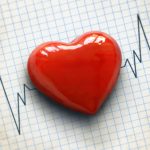 Exhaled carbon monoxide levels can be an indication of stroke risk and heart disease. A recent study found that in seemingly healthy adults exhaled carbon monoxide levels indicated an increased stroke risk.
Exhaled carbon monoxide levels can be an indication of stroke risk and heart disease. A recent study found that in seemingly healthy adults exhaled carbon monoxide levels indicated an increased stroke risk.
Carbon monoxide is naturally produced by the body and previous research has linked exhaled carbon monoxide with an increased risk of heart disease.
Advertisement
The new study examined 3,300 healthy adults for an average of 13 years. Participants had their exhaled carbon monoxide levels measured over this time period.
Although the study did not prove cause and effect, it did reveal an association between exhaled carbon monoxide and stroke risk. They found that in comparison to the one-third lowest carbon monoxide levels those in the middle group had a 67 percent increased risk of stroke. Those with the highest levels had a 97 percent increased risk of stroke.
Brain scans were conducted on 2,000 of the participants, and researchers found high levels of carbon monoxide to be linked with lower total brain volume, higher white matter volume and higher rates of silent stroke compared to those with the lowest levels.
Expert Dr. Len Horovitz from Lenox Hill Hospital in New York City said, “It is well known that accidental or intentional inhalation of carbon monoxide is a dangerous situation that can lead to coma, brain damage and death.”
Earlier study linked carbon monoxide to heart problems
 One study from researchers at Rhode Island Hospital found that carbon monoxide can cause direct damage to the heart by leading to direct damage to heart muscles, which can affect the heart’s ability to pump blood and lead to permanently impaired cardiac function.
One study from researchers at Rhode Island Hospital found that carbon monoxide can cause direct damage to the heart by leading to direct damage to heart muscles, which can affect the heart’s ability to pump blood and lead to permanently impaired cardiac function.
Lead author, Selim Suner, M.D., said, “These findings suggest that heart damage caused by carbon monoxide may have long-lasting effects even after it’s been eliminated from the blood, making the diagnosis of carbon monoxide poisoning even more critical. While this research puts us one step in the right direction, there is still much more we need to know about the underlying mechanisms if we hope to someday develop targeted treatments.”
Additional findings from Yale University uncovered that an increase in carbon monoxide of one part per million within the maximum one hour exposure is associated with a 0.96 percent increase in hospitalization from cardiovascular issues in adults over the age of 65. The association was still true when carbon monoxide was below the one part per million.
The findings suggest that carbon monoxide is an under-recognized health risk among seniors.
Lead investigator, Michelle Bell, Ph.D., said, “This evidence indicates that exposure to current carbon monoxide levels may still pose a public health threat. Higher levels of carbon monoxide were associated with higher risk of hospitalizations for cardiovascular heart disease.”
“We found a positive and statistically significant association between same-day carbon monoxide levels and an increased risk of hospitalization for cardiovascular disease in general, as well as for multiple, specific cardiovascular disease outcomes, including ischemic heart disease, heart rhythm disturbances, heart failure and cerebrovascular disease,” Dr. Bell concluded.
Causes and signs of carbon monoxide poisoning
Carbon monoxide is a tasteless, odorless gas that can be emitted from cars. If levels of carbon monoxide are high, it can kill a person within minutes. Those who survive carbon monoxide poisoning are often left with psychological or neurological symptoms.
Carbon monoxide commonly comes from anything that produces combustion fumes. Carbon monoxide can come from:
 Heaters
Heaters- Fireplaces
- Car mufflers
- Space heaters
- Charcoal grills
- Car and truck engines
- Portable generators
We inhale carbon monoxide on a daily basis but high levels of it can lead to carbon monoxide poisoning. Carbon monoxide poisoning can lead to tissue damage and even death. To recognize if you have inhaled too much carbon monoxide, it’s important to recognize the symptoms. Symptoms of carbon monoxide poisoning are:
 Dull headache
Dull headache- Weakness
- Nausea
- Vomiting
- Confusion
- Dizziness
- Chest pain
A person can become unconscious if they inhale too much carbon monoxide because the oxygen in your blood becomes replaced with carbon monoxide. If you have been exposed to carbon monoxide but don’t feel symptoms, you should still seek out medical attention.
Reduce exposure of carbon monoxide and keep your heart healthy
Advertisement
Reducing exposure to carbon monoxide is crucial, especially the older you are because it can become more life-threatening. Additionally, as research has found, it can increase the risk of stroke and damage your heart, so reducing exposure is essential to good health.
Here are some tips to help reduce your exposure to carbon monoxide.
- Choose heating appliances wisely and have them properly installed, maintained, ventilated, and checked regularly.
- Ensure there is proper ventilation in a room where there are fuel-burning appliances.
- Do not use gas appliances for home heating purposes.
- Do not burn any type of fuel within the home, unless it’s firewood in a properly maintained and ventilated fireplace.
- Leave garage doors open when running a vehicle in a garage.
- If carbon monoxide has been released into a home, ensure all windows and doors are open to allow the gas to leave.
- Install carbon monoxide alarms – because it is odorless you will not be able to detect it like an alarm can.
Other strategies to reduce your risk of heart disease, aside from reducing your intake of carbon monoxide, include:
- Don’t smoke.
- Exercise for at least 30 minutes a day.
- Eat a heart healthy diet full of nuts, fruits, vegetables, fish and lean meat.
- Avoid fast food, processed food or food that contains trans or saturated fat.
- Maintain a healthy weight.
- Get enough sleep.
- Get annual physicals and monitor your blood pressure, cholesterol, and check for diabetes.
